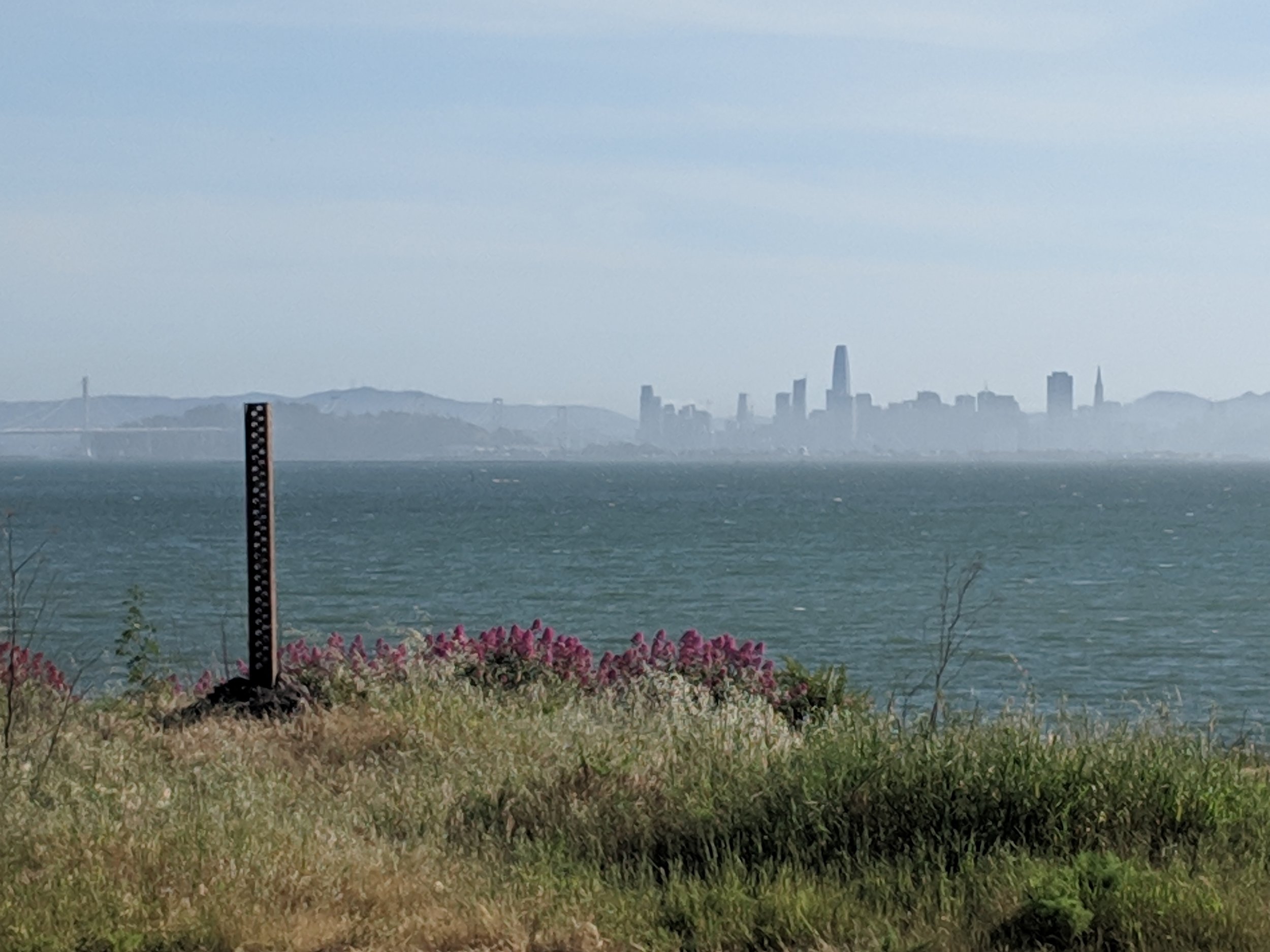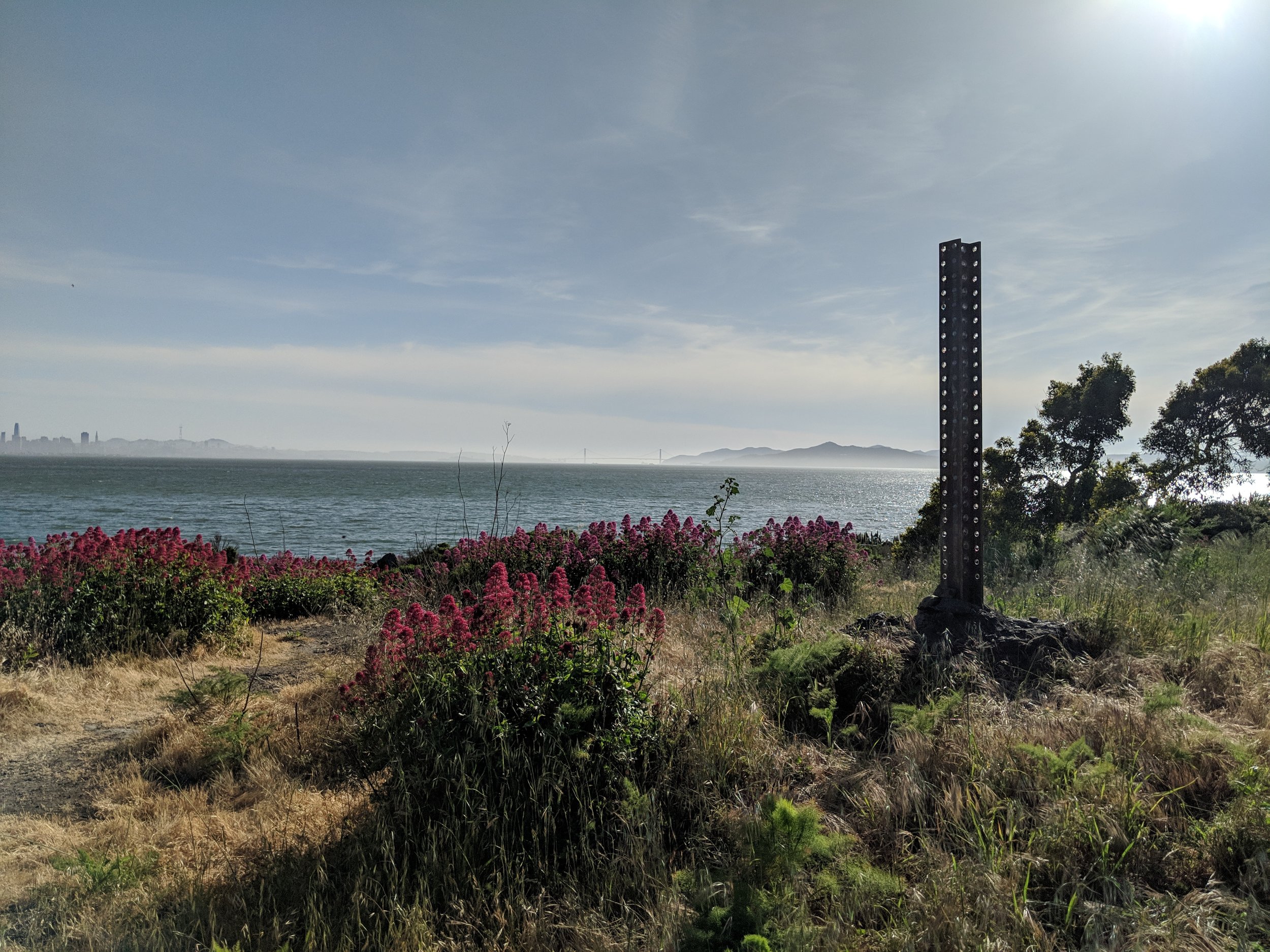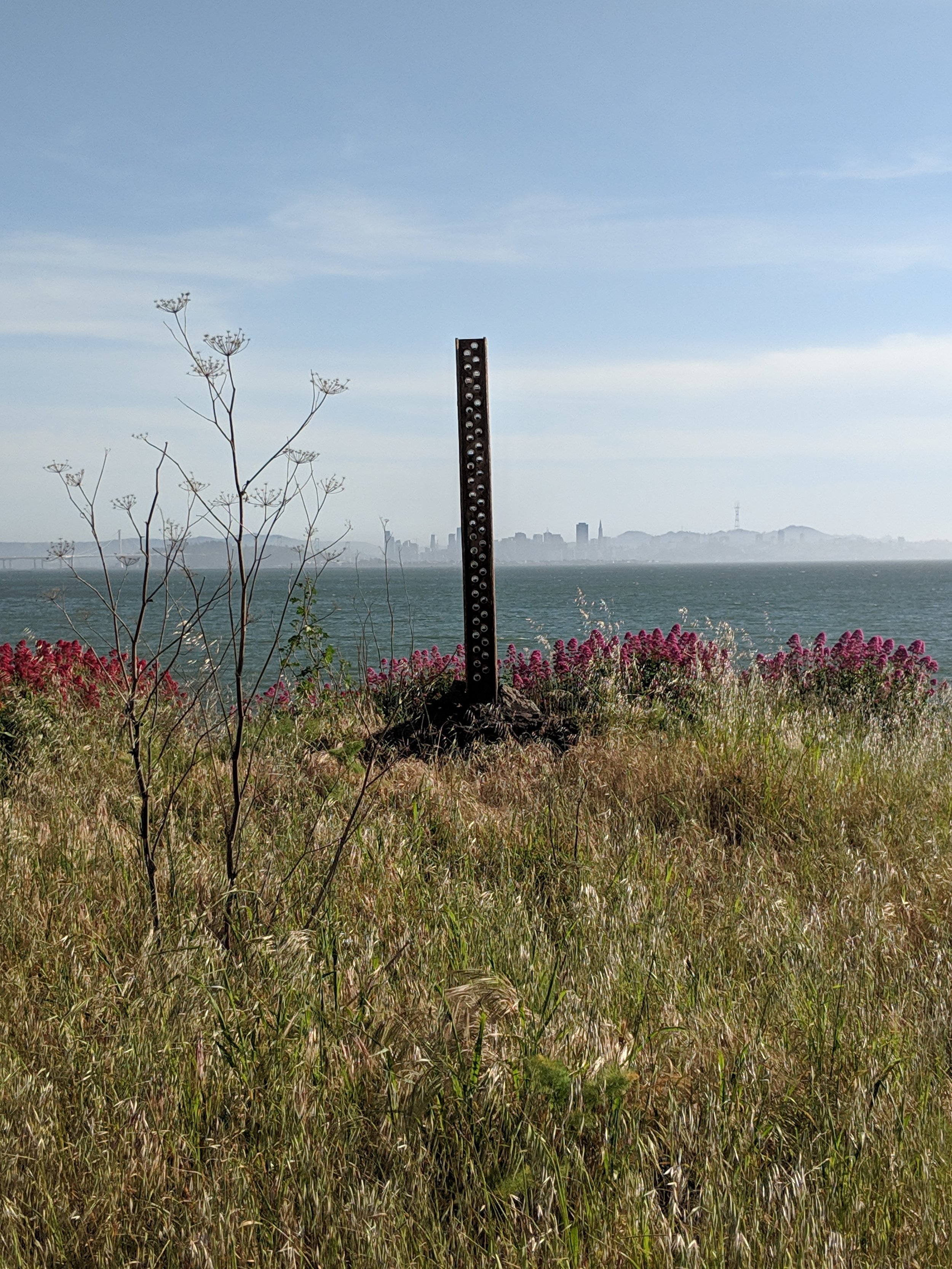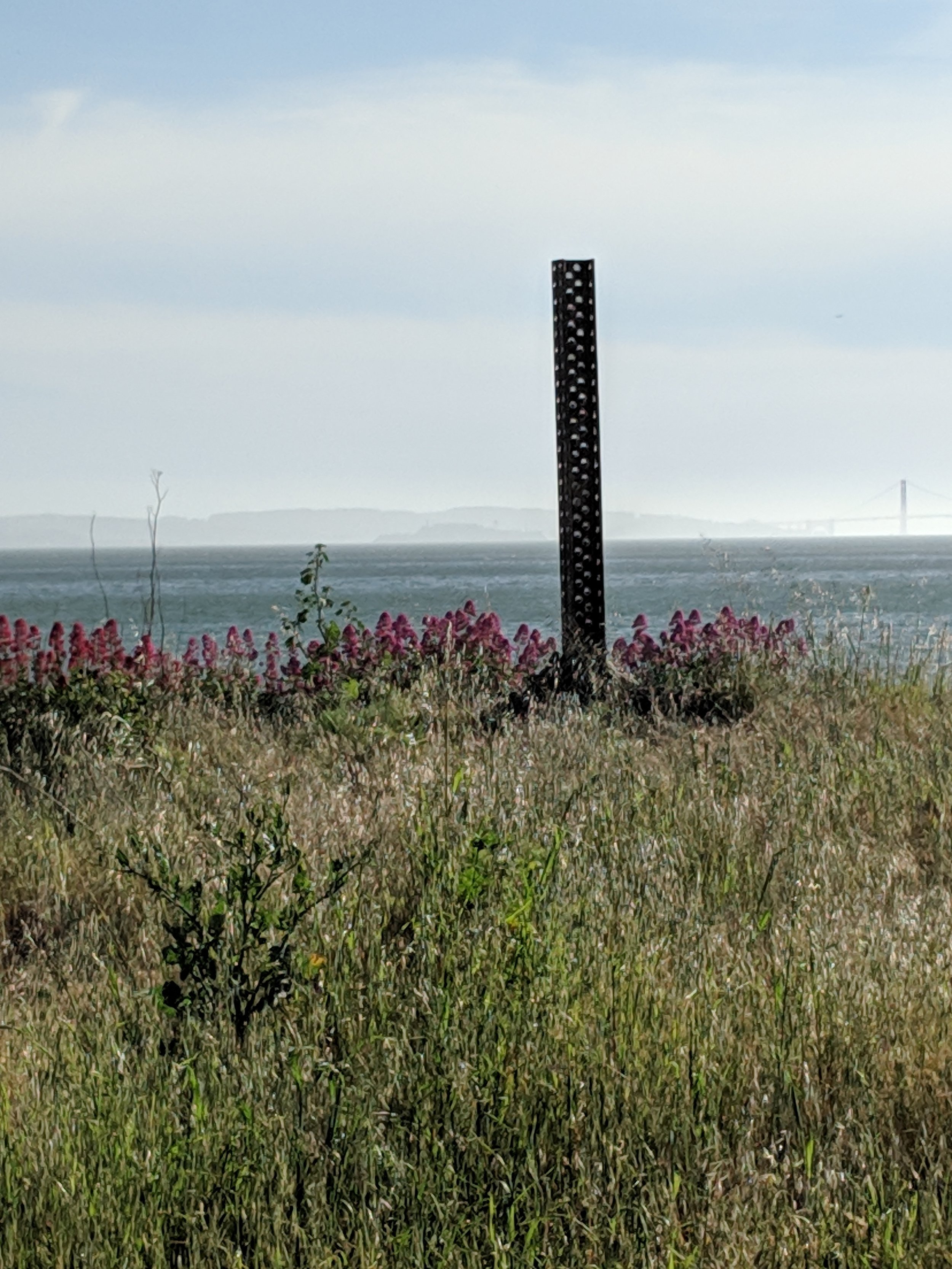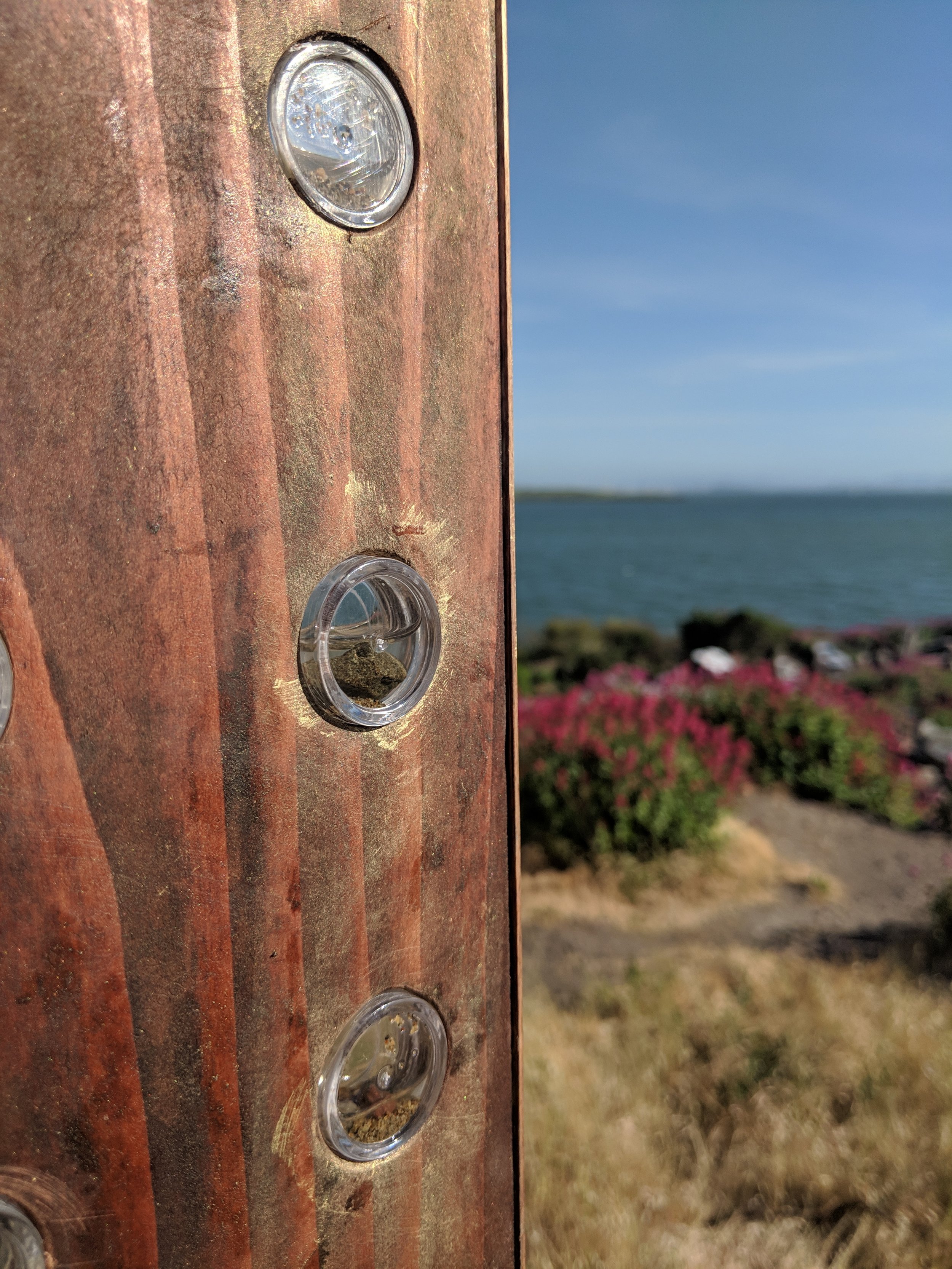750,000
Redwood
Plastic vials
Bay water, sand, mud
Gold Paint
2019
Albany Bulb, Albany, California
The Gold Rush wasn't this isolated environmental incident that took place in the Sierras. It’s byproducts - the sand and dirt and rock cast aside during mining - trickled down all those mountain creeks to all those Central Valley rivers to the Bay itself. Contrary to the popular mythos, the idyllic image of a man & his gold pan was but a brief moment in the Gold Rush that, by the mid-1850’s, had been replaced by more invasive means . The most invasive being hydraulic mining.
The practice ended in 1884 but WOW did it have an impact on… everything. The dams, the clear cutting, the carved up mountains, the mercury-coated sluices, the runoff trailing to the sea & the habitats destroyed along the way. It flooded Central Valley farms, it silted up rivers making them unnavigable, it blasted 1.5 billion cubic yards of soil & rock to smithereens, it consumed 60,000 tons of mercury, & left 400 million cubic meters of silt in the Bay.
All this destruction for about 750,000 lbs of gold. That’s about 27,400 gold bricks worth. That’s a lot of coins and wedding bands. But maybe less than you’d think considering what it took to get.
The Albany Bulb - the site for 750,000 - exists in an interstitial space between the natural and the industrial; an aesthetic wastelend whose spiritual twin is that most famous of hydraulic mines, the Malakoff Diggins. It juts into a section of Bay that saw silt added by *the feet* during the hydraulic mining era. Some of it, one can assume, from the Malakoff Diggins itself. But nature is resilient and has found her redemption in both sites. It heals its wounds and births sweeping landscape vistas from the scars. It shoots up trees and flowers from the rubble, smoothing over the past in a living, breathing, photosynthetic film. As if to say, “You tried to bury us but it was you that were buried instead.”
With this piece I wanted to acknowledge the ways the Bay has been impacted by human development. To contrast that shiny city across the water with the environmental toll it took to build and sustain it. 180 small vials filled with sand, rock, water, and shells collected from the most westward point of the Bulb. All encased in three planks of redwood, the native tree most impacted by Gold Rush era deforestation. Displayed in an landfill for construction debris turned into a park and open air art promenade.
750,00 will be on display at the Albany Bulb as an officially sanctioned installation from May 4th through July 29th, 2019. I want to thank Love the Bulb and Bulbfest 2019 for making this work possible. Your efforts to preserve this singular space are an inspiration.
Water vs rock, gold vs green, 750,000 pounds of metal vs the natural world...


